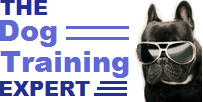For convenience, we will refer to your dog as “he” rather than “he or she”.
Many expert dog trainers offer some very sound advice to novice trainers, when thy recommend that the novices carefully observe the behaviour of their dogs and then concentrate on what seems to make the dogs happy and relaxed and confident.
With this knowledge, the trainer can reinforce each good activity that the dog likes and so turn training sessions into periods of fun and enjoyment. This will reinforce the quality of the training and ensure that the new skills are learnt more quickly and effectively.
Use these same techniques of observation to discover the type of reward that best pleases your dog. If the reward is some type of food, ensure that it is beneficial for you dog and promotes good health. Remember to consider using other forms of reward. These could include fun breaks, playing games together, or being allowed some time with his favourite toy. Some dogs seek praise as an enjoyable reward. Make an effort to find out what it is that your dog really enjoys.
Experienced trainers realize that all good training programs contain repetition and reinforcement exercises. This applies to all dogs. A skill which your dog seems to have mastered one day can present troubles the next. Do not lose heart over these apparent set backs. They are common, particularly when the task is somewhat complex. Remain cheerful and persevere with the training exercise as though nothing was wrong. If you have learnt to expect these relapses, they will soon be dealt with quickly and effectively, with no obvious fuss. Make every effort to determine what caused a relapse because this may help you in the reinforcing sessions. The chances of these relapses occurring are lessened by developing the habit of practicing the basic skill exercises each day. Once they are properly learnt, reinforcement will not have to be done so frequently.
When issuing an instruction make sure that you first have his full attention and he is not being distracted by something else. Then deliver the command in a clear and unambiguous way, with sufficient volume and emphasis to enable him to be certain that you have just given him an instruction and not simply carried out some general conversation with him. With some instructions it may be helpful to accompany the verbal command with a visual sign given at the same time. For example, when you issue the command to “come”, you might accompany the words with the actions of stepping back a pace or two and perhaps clapping your hands.
We wish you every training success and years of enjoyment for both you and your dog.

